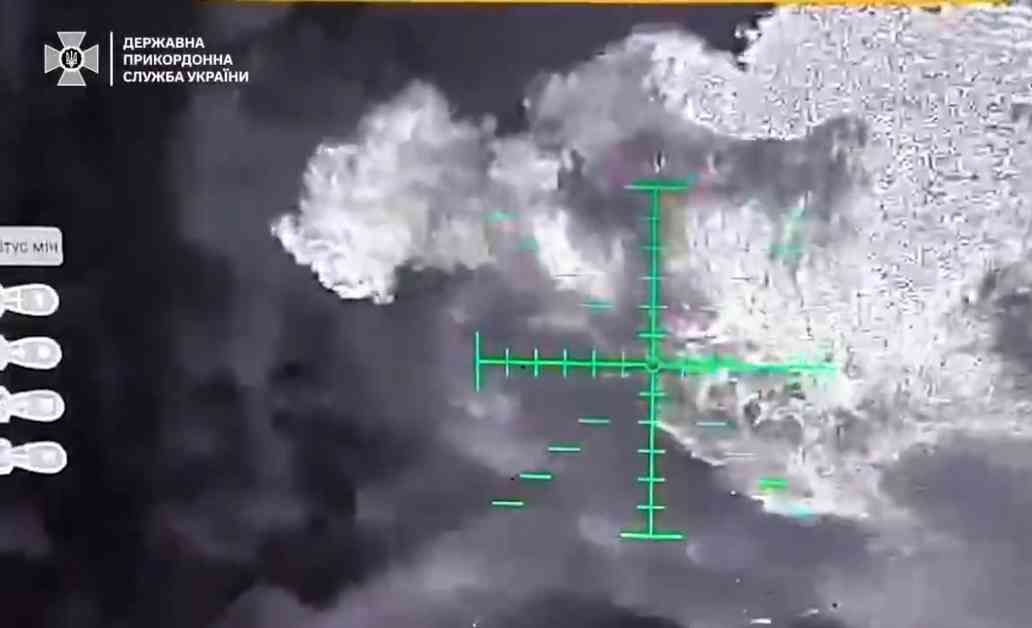Ukrainian Forces Employ Dragon Drones to Combat Russian Turtle Tanks with Thermite
In a compelling turn of events, Ukrainian forces have ingeniously devised a fiery strategy to counter the formidable Russian “turtle tanks,” as reported by esteemed war correspondent David Axe in Forbes. These tanks, aptly named for their heavy DIY armor modifications that include sheet metal, grills, and even logs, have proven to be quite resistant to conventional explosive drones.
Axe notes that while the additional armor may slow down and make steering these up-armored vehicles more challenging, it also serves to mitigate the impact of explosive first-person-view drones that are prevalent along the 800-mile front line. This dilemma prompted the Ukrainian forces to introduce a new countermeasure in the form of “dragon drones” equipped with thermite charges capable of burning at scorching temperatures of up to 5,000 degrees Fahrenheit (2,760 degrees Celsius). Notably, a 2000 US Army study indicates that individuals targeted by thermite have a mere 10 seconds to escape before facing potentially fatal burns.
The recent demonstration of the effectiveness of these incendiary drones took place near Kostyantynivka in Donetsk Oblast by Ukraine’s Phoenix drone group. In a single engagement, the group managed to destroy two tanks, two APCs, two IFVs, and an engineering vehicle, prompting the State Border Guard Service to commend their valor by stating, “The border guards are putting up a worthy resistance.”
The success of the Phoenix team was a testament to their strategic deployment of both traditional explosive FPV drones and the innovative thermite variant. During one attack, operators skillfully landed a dragon drone directly on a vehicle’s roof, where it proceeded to unleash its molten payload, swiftly penetrating the vehicle’s top armor. This tactic had previously been executed in October when a dragon drone targeted a tank, relentlessly releasing thermite until the vehicle was reduced to ashes. The Ukrainian Defense Ministry lauded the Phoenix group for their accomplishments, commending them with, “Great job, warriors.”
Despite these tactical triumphs, the Phoenix group and the 28th Mechanized Brigade face looming strategic challenges in defending their vulnerable position – a five-mile-deep salient east of Kostyantynivka that is now encircled on three sides by Russian forces following the fall of Toretsk. The Ukrainian Center for Defense Strategies has advised that these units may need to consider a westward retreat to evade encirclement.
Axe astutely points out the numerical superiority that Russian forces maintain in crucial sectors by stating, “Destroy one assault group, and two more take its place.” This observation underscores the uphill battle that Ukrainian forces face in their ongoing conflict with Russian adversaries.
Expert Insights on Ukrainian Drone Warfare Strategy
As the conflict in Ukraine intensifies, military experts emphasize the critical role that drone warfare plays in modern combat. Dr. Elena Petrova, a defense analyst at the International Security Institute, notes, “Ukrainian forces have demonstrated innovative tactics in utilizing drone technology to neutralize heavily armored targets effectively. This strategic adaptation showcases the importance of agility and resourcefulness in asymmetric warfare scenarios.”
Implications of Technological Advancements in Modern Warfare
The utilization of advanced drone technology in the Ukrainian conflict highlights the evolving nature of modern warfare and the escalating arms race between nations. Dr. Mikhail Ivanov, a military historian specializing in contemporary warfare, remarks, “The integration of drones armed with thermite charges represents a significant leap in technological capabilities on the battlefield. This development underscores the imperative for military forces worldwide to continually adapt and innovate in response to emerging threats.”
The dynamic landscape of conflict in Ukraine underscores the ever-evolving nature of warfare and the imperative for nations to remain agile and proactive in addressing emerging challenges. As Ukrainian forces continue to leverage cutting-edge technology to counter adversarial threats, the global military community watches with keen interest, recognizing the pivotal role of innovation in shaping the future of warfare.

















